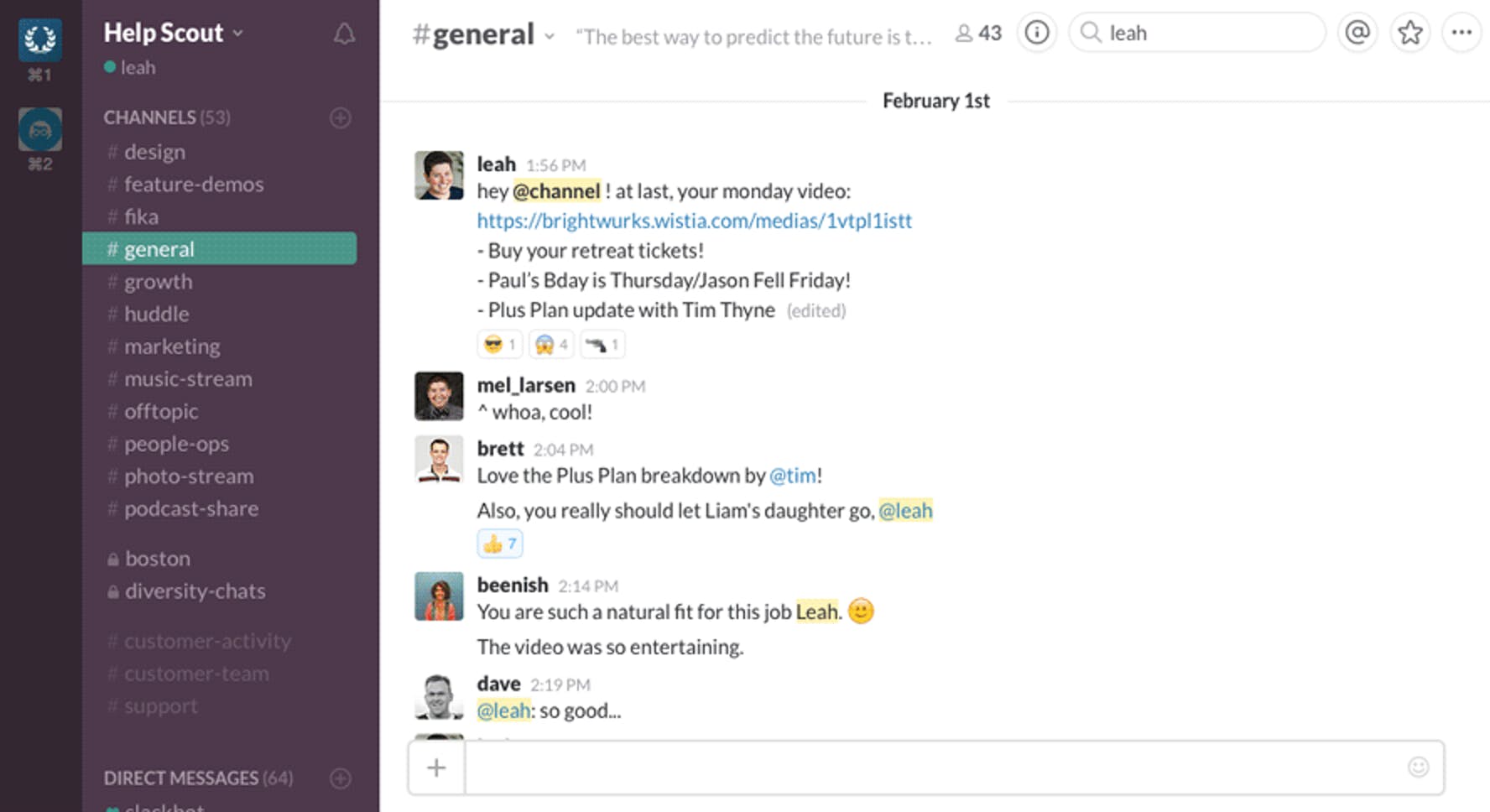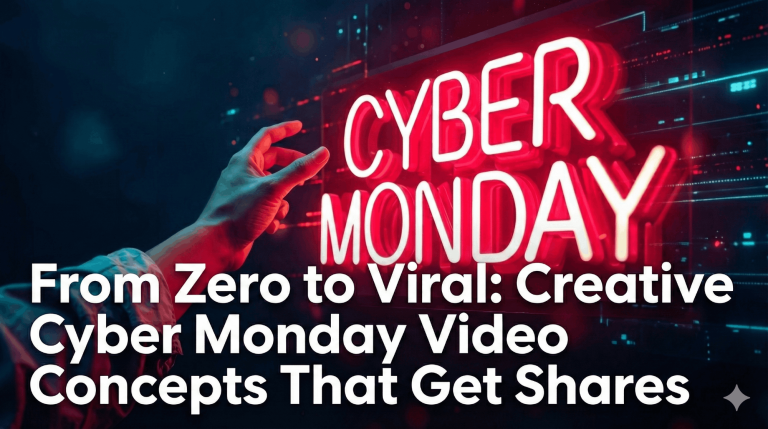
9 Ways Video Will Improve Internal Communication in Your Business in 2022

- Blog
- Small Business Tips
- 9 Ways Video Will Improve Internal Communication in Your Business in 2022
As a business, you already know the value of using video for communicating regularly with your target audience on all social media platforms. But did you know that video is just as valuable a tool for internal communication in your business? Luckily for you, creating videos for any internal communication plan is now fast, easy and affordable with Promo.
Following the pandemic, companies have re-evaluated office design, remote work, and their employees’ workspace requirements. In today’s workplace, it’s easier than ever to communicate across the board in a way that’s both dynamic and engaging – through internal video. Known as internal marketing, this is the practice of regularly communicating with your employees and workers so that they are aligned with the company’s vision, are always up-to-date on the latest relevant information, and remain highly motivated and engaged with their workplace.
In addition to being faster and safer, using video to communicate with employees is also affordable and time-saving. This article will explore some of the ways internal video can be used as a corporate communication tool and why you should add it to every process in your company.
What is the goal of internal communications?
James Humes wrote, “The art of communication is the language of leadership.” Every effective organization relies on a quick and direct flow of accurate information to the right people. That is what internal communications is all about. However, according to statistics, 60% of companies lack an internal communications strategy. 91% of employees also report that their leaders lack effective communication skills.
An effective internal communications strategy ensures transparent communication and feedback between and across teams. When employees are well informed about the company they work for, they become the company’s most valuable brand advocates. On the other hand, they may become its fiercest critic when they are ill-informed about what the company does. However, effective internal communication and employee communications is not information overload. It’s about improving the employee experience. This is why using video to communicate with employees is a smart idea. People would be more inclined to press play on an internal comm video than read a long text.
The Benefit of Using Video For Internal Communication
Streamlines communication
One of the communication challenges that – both small and large businesses – face, is the consistent vague requests from management. This could be because messages get distorted when they pass through various intermediaries. With internal company videos, top-down communication is simplified. And it’s easy to get people on the same page.
Affordable and accessible
Video creation used to be time-consuming, requiring expensive cameras and editing tools. But with online software like Promo, it has become easier than ever to create high-quality videos. Use our video maker to create a professional video for internal communication and send it directly to team members in minutes.
Saves time and unnecessary meetings
Getting to and from meetings, waiting for meetings to take place is largely unproductive. Today, a side effect of the work from home trend is that businesses are under pressure to streamline operations and increase productivity. Traditional face-to-face meetings have been replaced by web conferencing on Zoom, Google Meet,… But with on-demand video and internal video, more time could be saved by eliminating unnecessary meetings altogether.
Inclusive to visual learners
According to data from Digital HR tech, employees are likely to retain 95% of a message when communicated via video. 65% of people are visual learners, meaning they need to see information presented visually to retain it. Apart from this, the emotions and mannerisms displayed by a real person in a video add a personal touch that makes video communication and video education a favorite among workers.
9 Ideas For Internal Comms Videos
1. Share company news
In both team settings and company-wide scenarios, employees need to be informed about the direction the company is headed. IBM’s research showed that 72% of employees do not fully understand their company’s strategy.
Whether to share team goals and OKRs, or to celebrate company wins, internal video is an effective medium to convey your message. It need not be a fancy video either.
Internal video can be used to give weekly updates, recognizing and keeping employees informed and engaged. Note that one of the major causes of high employee turnover rates is the lack of positive supervisor feedback. According to a Gallup poll, workers whose managers’ feedback left them with positive feelings are about four times more likely to be engaged. Only 3.6% of these workers are actively looking for new jobs.
As an example of using internal communications video for team management, supervisors at Helpscout give weekly updates by video to team members. These videos, sent out every Monday, have replaced boring company email newsletters. The videos keep the team informed about company news, new features, and even birthdays.

2. Introduce New Employees
One of the difficult parts of employee onboarding is helping new employees blend into the team. How can you support and make new employees feel welcome without being overbearing? You could ask each newly-hired team member to create an introductory video that would be posted to the team collaboration platform or sent through email to everyone at the company. Existing employees can comment on these videos, essentially breaking the ice.
These kinds of videos are not only fun, promote pleasant company culture. They are also a great way to create team rapport when team members stay in different countries or work remotely. Employee intros are a cost-effective and easier way of getting team members and employees acquainted with each other.
3. Onboard New staff
According to the Society for Human Resource Management, the cost of onboarding a new employee is greater than $4,100. On-demand video can help reduce the cost of employee onboarding drastically. Internal onboarding videos will help streamline your onboarding process and create convenience for remote hires. Unlike the tedious process of hiring internal staff, sharing HR forms, documentation, and welcome kits, you can have centralized storage where people can access relevant onboarding videos anytime. This allows new workers to brush up on company procedures and safety rules as needed. Consider creating videos on these topics for your employee onboarding video library:
- Company overview and culture
- Department overview
- Job description and tips
- IT policies and procedures
- Safety rules
Videos can make employee onboarding more fun. So don’t be afraid to infuse creativity and humor into your employee onboarding videos.
4. Create internal product demos
Using video to communicate with employees can be very useful when you’re starting a new project, displaying a new feature, or introducing a new project. In product development teams, a product demo shows how to use a software/tool to accomplish a specific objective. It would explain the main features and also answer common questions about the product. You can use them to demonstrate your company’s new features to your staff, investors, your designer, sales and marketing teams, and your CEO. Demonstrating your product internally helps you get everyone on the same page – instead of giving different answers about it. Additionally, you can quickly get feedback on the product or new feature.
However, internal product demos need to be planned and not done spontaneously. Note the following tips:
- Develop an outline and decide on the structure of the video
- Record and edit your video, emphasizing the most critical steps.
- Ensure that all stakeholders are present at the same time. Presenting your product to different stakeholders or teams individually can be stressful and can also result in contradictory feedback.
5. Use videos for corporate training and education
According to Gallup’s research, millennials want jobs that offer opportunities for growth. A robust corporate training program is therefore essential for companies who wish to reduce millennial turnover. Millennials, making up 49% of the workforce, are 2.7 times more likely to learn something new through video. For many small businesses, producing internal videos for employees is an effective way to engage employees.
Internal training videos are also more efficient, cost-effective and scalable compared to face to face training. Experts suggest making on-demand corporate training videos 6 minutes long, or breaking them into 6 minute parts. You can set up a team to produce the video training, selecting people from different departments including HR, sales, legal etc.
6. Document charitable work
Employees want to know that their jobs serve a greater purpose. They want to be a part of something important. 70% of employees believe their job is tied to their purpose. The likelihood of leaving a job increases when they feel the job isn’t fulfilling. Based on McKinsey’s study, people who live their purpose at work are more likely to be productive than those who do not.
Based on the study, when workers were asked if they lived their purpose every day, the gap between executives and others widened significantly. Eighty-five percent of executives and upper management said that they are living their purpose at work, but only 15 percent of frontline managers and employees said the same.
In addition to sharing the company’s “why” and talking about the company’s broader purpose, one thing you can do to foster employee engagement is to document charitable work and events held to raise money for charity. This reminds your employees that they are working towards a higher purpose. Photographs and videos of these events show emotions and gestures that people cannot see through text.
7. Share messages from the CEO
Internal video can help simplify top-down communication in your company. It’s also easier for people to digest. So as a CEO, whether you’re trying to deliver positive or bad news, the video will help you offer more context. These can be company-wide videos or videos sent out to specific teams.
They can be gratitude videos, appreciating each employee for their efforts towards the company’s progress or a summary of recent industry updates as it affects the company.
Messages from the CEO videos can be followed up with a live “what does this mean for us?” session, where workers can get their questions answered. This will ensure that everyone is fully engaged and on the same page. As a CEO, using video to communicate with employees will help foster a culture of trust and communication within your company.
8. Showcase company culture
Company culture defines how your company’s leaders and employees interact with each other, as well as how they make decisions. But it’s not enough to talk about company culture abstractly; your new employees must experience it.
This is where employee-generated content and other internal branding ideas can be leveraged. Ask current employees to create videos discussing what the company does. Include a clip of customer interactions and team gatherings. Let employees talk about the role they play in fulfilling the company’s mission. Going forward, you want to foster and simplify communication among employees by making it easy to create and use company culture videos as an internal comms tool.
9. Create transparency with project recap videos
If you organize events, then you’re familiar with recap videos. They reveal to non-attendees the main highlights of the event. With the rise in remote work, managers want to be on top of new changes and the progress team members are making. Instead of sending a project report that most people would find boring, simplify your communication via video.
Project recap videos, which can also be used externally via case studies, will show the significant changes that have moved the needle forward on a project. Internally, these types of videos help improve transparency and trust among team members. They also help make handing off projects from one team to another seamless. As usual, with all types of corporate video, make sure these are short, presenting the main highlights of the project.
Conclusion
In the ongoing pursuit of growth and social media presence, businesses often forget to include their most important allies in their communication plans – their team members and employees. While in the past internal communication relied heavily on sheets, presentation and meetings, the use of video not only simplifies the process but also delivers a much more engaging and positive experience.
Make Your First HR Video Today
Improve employee engagement from today with great videos created on Promo.com
About the author
Promo Team
We believe that words shape thoughts and inspire action. Promo's content team is fueled by the motivation to help you to transform your words and ideas into powerful videos that help you communicate better with your audience and grow your reach.


